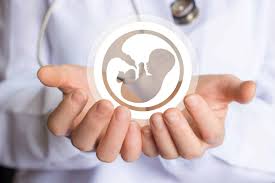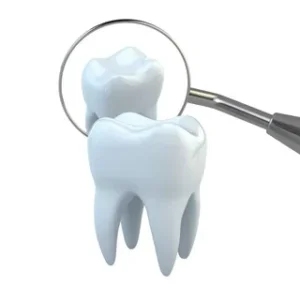Deciding to get a hair transplant in Dubai is a big step towards restoring your confidence and reclaiming a fuller head of hair. But understanding the procedure itself is just as important as choosing the right clinic or surgeon. Knowing what to expect before, during, and after the surgery helps you prepare mentally and physically, ensuring a smoother experience and better results.
This article breaks down the hair transplant procedure in Dubai in simple terms, so you can approach your journey well-informed and confident.
What Is a Hair Transplant?
A hair transplant is a medical procedure that moves healthy hair follicles from a donor area (usually the back or sides of your scalp) to thinning or bald areas. The goal is to restore natural hair growth in places affected by hair loss.
Hair transplants don’t just cover bald patches temporarily; they provide permanent, living hair that grows naturally.

Types of Hair Transplant Techniques in Dubai
Dubai clinics offer several advanced techniques, but the two most popular are:
1. Follicular Unit Extraction (FUE)
FUE involves extracting individual hair follicles one by one from the donor area using a tiny punch tool. These follicles are then implanted into the recipient area.
-
Pros: Minimal scarring, quicker healing, and suitable for smaller or larger areas.
-
Cons: Can be time-consuming and may require multiple sessions for extensive hair loss.
2. Follicular Unit Transplantation (FUT)
FUT, also known as the strip method, involves removing a thin strip of scalp from the donor area. The strip is dissected into individual follicular units and implanted in the thinning regions.
-
Pros: Can transplant a large number of grafts in one session, often more affordable.
-
Cons: Leaves a linear scar and requires a longer healing time.
Step-by-Step: What Happens During a Hair Transplant in Dubai?
Step 1: Initial Consultation
Your hair transplant journey starts with a consultation where your surgeon examines your scalp, discusses your medical history, and evaluates your hair loss pattern. This helps determine if you’re a good candidate and which technique suits you best.
Step 2: Preparation
On the day of the procedure, your scalp will be cleaned and numbed with a local anesthetic. This ensures the process is pain-free.
Step 3: Harvesting Hair Follicles
-
In FUE, the surgeon uses a micro-punch tool to extract individual follicles.
-
In FUT, a strip of scalp is surgically removed.
Step 4: Preparing the Recipient Area
Tiny incisions or holes are made in the balding or thinning area where the follicles will be implanted.
Step 5: Implanting the Follicles
The extracted follicles are carefully placed into the recipient sites following the natural hair growth direction to ensure a natural-looking hairline.
Step 6: Post-Procedure Care
After implantation, your scalp may be bandaged. You’ll receive instructions on caring for the area, managing discomfort, and avoiding activities that could affect healing.
How Long Does the Procedure Take?
A typical hair transplant in Dubai can take anywhere from 4 to 8 hours depending on the number of grafts and technique used. Some extensive cases may require more than one session.
What to Expect After Your Hair Transplant in Dubai
Immediate Aftercare
-
Mild swelling and redness around the transplant site are normal.
-
Small scabs form around implanted follicles and usually fall off within 10-14 days.
-
Pain or discomfort is typically minimal and manageable with prescribed medications.
Shedding Phase
Many patients experience shedding of transplanted hair within the first few weeks — this is a natural part of the cycle called “shock loss” and doesn’t mean the transplant failed.
New Hair Growth
Hair starts to regrow approximately 3-4 months post-procedure. Growth is gradual but noticeable, with full results visible between 9 to 12 months.
Who Is a Good Candidate for Hair Transplant in Dubai?
Ideal candidates generally have:
-
Sufficient healthy donor hair
-
Realistic expectations about the outcome
-
No medical conditions that impair healing
-
Stable hair loss (not actively shedding extensively)
Your surgeon will evaluate these factors during your consultation.
Common Concerns and Myths About Hair Transplant Procedure
Myth 1: Hair Transplants Are Painful
Thanks to modern anesthesia, most patients feel little to no pain during the procedure.
Myth 2: Results Are Immediate
Patience is key — full hair growth takes months, and the initial shedding phase can be confusing.
Myth 3: Hair Transplants Don’t Look Natural
When done by experienced surgeons, transplanted hair blends seamlessly with your natural hair.
Tips for Preparing for Your Hair Transplant in Dubai
-
Avoid alcohol and smoking at least a week before surgery.
-
Follow your surgeon’s instructions regarding medications.
-
Arrange for someone to accompany you on the procedure day.
-
Plan to take a few days off work to rest and recover.
Why Dubai Is a Great Place for Hair Transplants
Dubai offers world-class medical facilities, highly skilled surgeons, and access to the latest hair restoration technologies. The city’s clinics cater to international patients with personalized care and multilingual support, making it a sought-after destination for hair transplants.
Final Thoughts
Understanding the hair transplant procedure in Dubai empowers you to make informed decisions and sets the stage for a successful hair restoration journey. From choosing the right technique to knowing what to expect during recovery, this knowledge helps ensure your experience is comfortable and rewarding.
If you’re considering a hair transplant, book a consultation with a trusted Dubai clinic to discuss your options and take the first step toward regaining your confidence with natural-looking hair.







